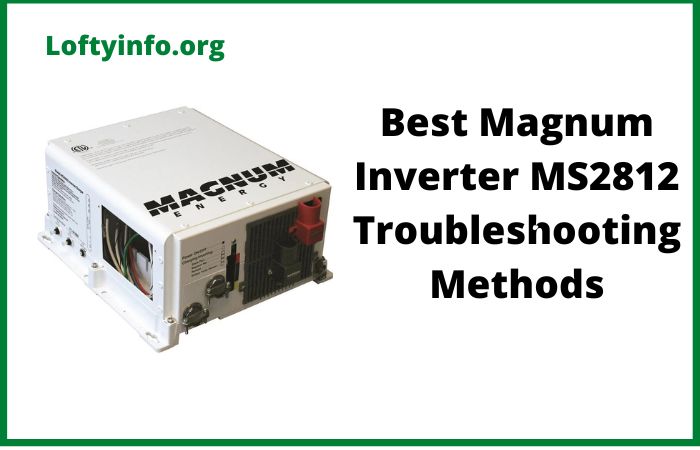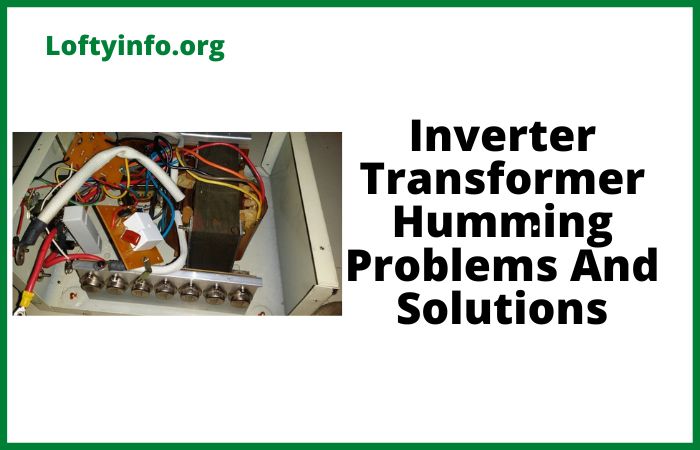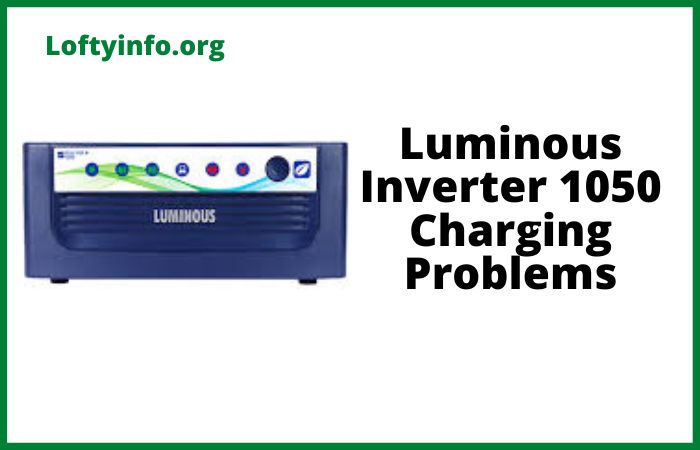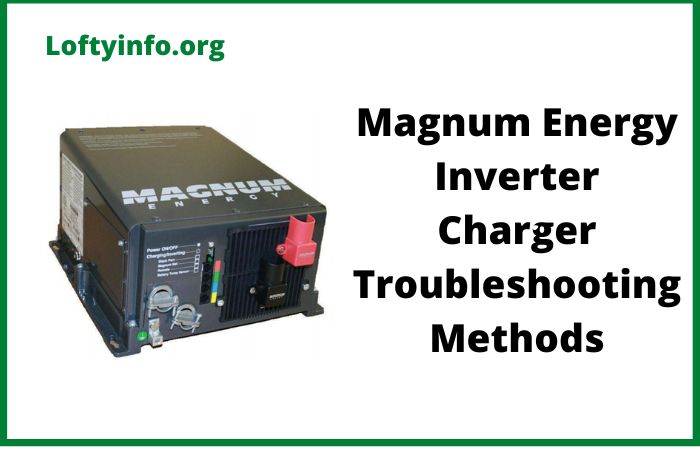Magnum Inverter MS2812 Troubleshooting Guide: Best Methods For Easy Fix
The Magnum MS2812 pure sine wave inverter is a reliable power conversion solution for RVs, boats, and off-grid applications.
Like any electronic device, it can experience issues that require systematic troubleshooting.
This comprehensive guide covers proven methods to diagnose and resolve common Magnum MS2812 inverter problems, helping you restore reliable power conversion quickly and safely.
Understanding Your Magnum MS2812 Inverter Before Troubleshooting
The Magnum MS2812 is a 2800-watt pure sine wave inverter/charger that converts 12V DC battery power to 120V AC household power.
Before diving into troubleshooting methods, it’s crucial to understand that most inverter issues stem from power supply problems, overloading, overheating or improper installation.
Always prioritize safety by turning off the inverter and disconnecting power sources before performing any diagnostic procedures.
Best Magnum Inverter MS2812 Troubleshooting Method
Method 1: Check Power Supply and Battery Connections
Why This Method Works
Poor battery connections are the leading cause of Magnum MS2812 inverter failures.
Loose, corroded or undersized connections create voltage drops and resistance that prevent proper operation.
Step-by-Step Process
Start by visually inspecting all DC connections at the inverter terminals and battery posts.
Look for signs of corrosion, which appears as white, green or blue powdery deposits around connection points.
These deposits create electrical resistance that can cause voltage drops and erratic inverter behavior.
Use a digital multimeter to measure voltage directly at the inverter’s DC input terminals while the unit is operating under load.
The voltage should remain above 11.5V during normal operation.
If readings drop significantly below this threshold, suspect connection problems or battery issues.
Magnum RV Inverter Troubleshooting Best Methods
Clean corroded terminals using a wire brush and baking soda solution then apply dielectric grease to prevent future corrosion.
Ensure all connections are tight using the manufacturer’s specified torque values, typically 35-40 ft-lbs for the main DC terminals.
What to Look For
Voltage readings below 10.5V indicate severely discharged batteries or poor connections.
Fluctuating voltage readings suggest loose connections or failing battery cells.
Temperature differences between connection points may indicate high resistance connections.
Method 2: Perform Load Analysis and Management
Understanding Load-Related Issues
The Magnum MS2812 inverter can handle 2800 watts continuously but many users unknowingly exceed this capacity, triggering protective shutdowns.
Understanding your actual power consumption is essential for proper troubleshooting.
Calculating Your Power Load
Create a comprehensive inventory of all devices connected to your inverter system.
Use the formula: Watts = Volts × Amps to calculate power consumption for each device.
Remember that many appliances draw higher power during startup, particularly motors, compressors and heating elements.
For example, a microwave rated at 1000 watts may actually consume 1200-1300 watts when accounting for inefficiencies.
Coffee makers, hair dryers and space heaters are common culprits for overloading the MS2812 inverter.
Load Testing Procedure
Connect devices gradually while monitoring the inverter’s LED indicators and measuring AC output voltage.
If the inverter shuts down when adding a specific device, you’ve likely exceeded the power capacity or encountered a surge current situation.
Use a Kill-A-Watt meter or similar power monitoring device to measure actual power consumption rather than relying on nameplate ratings.
This provides accurate data for load management decisions.
Managing Excessive Loads
Implement load scheduling by operating high-power devices sequentially rather than simultaneously.
Consider installing a secondary inverter for dedicated high-power applications or upgrade to a higher-capacity model if your power needs consistently exceed 2800 watts.
Method 3: Temperature Monitoring and Cooling System Maintenance
Why Temperature Matters for Inverter Performance
The Magnum MS2812 inverter generates significant heat during operation and excessive temperatures trigger protective shutdowns to prevent component damage.
Understanding thermal management is crucial for reliable operation.
Identifying Temperature Problems
Monitor the inverter’s internal temperature using the built-in temperature sensor accessible through the remote control panel or monitoring system.
Normal operating temperatures should remain below 140°F (60°C) under typical load conditions.
Check the cooling fan operation by listening for proper startup when the inverter begins operating under load.
The fan should activate automatically when internal temperatures rise above preset thresholds, typically around 120°F (49°C).
Cooling System Maintenance
Clean the inverter’s heat sinks and ventilation areas regularly using compressed air or a soft brush.
Dust and debris accumulation significantly reduces cooling efficiency, leading to premature thermal shutdowns.
Ensure adequate ventilation around the inverter installation.
Maintain minimum clearances of 6 inches on all sides and 12 inches above the unit for proper airflow.
Avoid installing the inverter in enclosed spaces without ventilation fans.
Environmental Considerations
High ambient temperatures reduce the inverter’s effective power output capacity.
In environments above 95°F (35°C), consider additional ventilation fans or relocating the inverter to a cooler area.
Marine and RV installations often require supplemental cooling solutions.
Method 4: Verify Proper Grounding and Safety Systems
Understanding Grounding Requirements
Proper grounding is essential for safe Magnum MS2812 inverter operation and protects against electrical faults.
Inadequate grounding can cause erratic operation, electrical noise, and safety hazards.
Grounding System Inspection
Verify that the inverter’s chassis ground terminal connects to your system’s main grounding point using 8 AWG or larger copper wire.
This connection should be tight, corrosion-free and create a continuous path to earth ground.
Test ground continuity using a multimeter set to resistance mode.
Measure between the inverter chassis and known good ground points.
Resistance should be less than 1 ohm, indicating a proper ground connection.
AC Grounding Verification
Check that the AC output neutral and ground connections follow proper electrical codes.
The neutral-to-ground bond should only exist at one point in your electrical system, typically at the main panel or generator transfer switch.
Improper neutral-ground bonding can cause ground loops, creating electrical noise and potential safety issues.
Use a multimeter to verify that neutral and ground voltages remain within acceptable limits during inverter operation.
Safety System Testing
Test the inverter’s ground fault circuit interrupter (GFCI) protection if equipped.
This safety feature protects against electrical shock by detecting current imbalances between hot and neutral conductors.
Method 5: Battery Health Assessment and Maintenance
Why Battery Health Affects Inverter Performance
The Magnum MS2812 inverter depends entirely on battery power for operation.
Degraded batteries create voltage instability, reduced runtime and can damage the inverter’s internal components over time.
Comprehensive Battery Testing
Perform specific gravity tests on flooded lead-acid batteries using a hydrometer.
Readings should be consistent between cells, typically 1.250 to 1.280 for fully charged batteries.
Significant variations indicate failing cells that affect overall battery bank performance.
Conduct load testing using a carbon pile tester or electronic load tester.
Apply a load equal to 50% of the battery’s CCA rating for 15 seconds while monitoring voltage.
Voltage should remain above 9.6V for 12V batteries during this test.
Battery Maintenance Procedures
Clean battery terminals and cable connections regularly using a wire brush and baking soda solution.
Apply terminal protectant spray to prevent future corrosion buildup that creates electrical resistance.
Check electrolyte levels in flooded batteries monthly, adding distilled water as needed.
Maintain water levels above the plates but below the fill ports to prevent overflow during charging.
Battery Bank Configuration Issues
Verify proper battery bank wiring using series and parallel configurations appropriate for your system voltage and capacity requirements.
Mismatched batteries or improper connections create imbalances that reduce performance and lifespan.
Use batteries of identical type, age and capacity within each bank.
Mixing different battery technologies or capacities creates charging and discharging imbalances that can damage both batteries and inverter.
Method 6: Systematic Diagnostic Using Error Codes and LED Indicators
Understanding Magnum MS2812 Diagnostic Systems
The Magnum MS2812 inverter provides valuable diagnostic information through LED indicators and error codes displayed on remote panels.
Learning to interpret these signals enables quick problem identification.
LED Indicator Interpretation
The inverter’s front panel LEDs provide immediate status information.
A steady green LED indicates normal operation while flashing patterns indicate specific fault conditions.
Red LEDs typically indicate fault conditions requiring immediate attention.
Yellow or amber LEDs often indicate warning conditions that may lead to shutdowns if not addressed.
These might include high temperature warnings, low battery voltage or overload conditions approaching the trip threshold.
Error Code Analysis
Access detailed error codes through the Magnum remote control panel or monitoring system.
Common error codes include E01 (high DC voltage), E02 (low DC voltage), E03 (overtemperature) and E04 (overload protection).
Document error codes when they occur, noting the conditions and connected loads at the time.
This information helps identify patterns and root causes of recurring problems.
Diagnostic Reset Procedures
Some error conditions require manual reset after correcting the underlying problem.
Follow the manufacturer’s reset procedures, typically involving power cycling or specific button sequences on the remote control.
Avoid repeatedly resetting error conditions without identifying and correcting the root cause, as this can lead to component damage or safety hazards.
Method 7: AC Output Quality and Waveform Analysis
Importance of AC Output Quality
The Magnum MS2812 produces pure sine wave AC output, but various factors can degrade output quality, causing sensitive electronics to malfunction or sustain damage.
Measuring AC Output Parameters
Use a true RMS digital multimeter to measure AC output voltage and frequency under various load conditions.
Output voltage should remain within ±5% of nominal (114-126V for 120V systems) and frequency should stay at 60Hz ±0.1Hz.
Test voltage stability by connecting and disconnecting loads while monitoring output voltage. Significant voltage drops or spikes indicate internal problems or inadequate DC input power.
Waveform Quality Assessment
Advanced troubleshooting may require oscilloscope analysis to examine output waveform quality.
Pure sine wave inverters should produce smooth sinusoidal waveforms without distortion, harmonics or noise.
Look for waveform abnormalities such as clipping, ringing or high-frequency noise that can damage sensitive electronic equipment.
These issues often indicate component degradation or electromagnetic interference problems.
Harmonic Distortion Testing
Total Harmonic Distortion (THD) should remain below 3% for quality pure sine wave inverters.
Higher THD levels can cause motors to run hot, electronic devices to malfunction and audio equipment to produce noise.
Use power quality analyzers or specialized meters to measure THD if sensitive equipment experiences problems when operating from the inverter.
Method 8: Firmware Updates and Factory Reset Procedures
Understanding Firmware’s Role in Inverter Operation
The Magnum MS2812 inverter uses internal firmware to control operation, manage protection systems and communicate with monitoring equipment.
Outdated or corrupted firmware can cause various operational problems.
Checking Firmware Version
Access firmware version information through the Magnum remote control panel or monitoring software.
Compare your version against the latest available firmware on the manufacturer’s website to determine if updates are needed.
Document your current firmware version before attempting updates, as downgrading may be necessary if problems occur with newer versions.
Firmware Update Process
Follow Magnum’s specific procedures for firmware updates, typically involving connecting a computer to the inverter’s communication port and using specialized software.
Ensure stable power supply during updates to prevent corruption.
Never interrupt firmware updates once started as this can render the inverter inoperable.
Consider using an uninterruptible power supply (UPS) to protect against power interruptions during the update process.
Factory Reset Procedures
Factory resets restore the inverter to default configuration settings, which can resolve configuration-related problems.
This erases all custom settings so document your current configuration before proceeding.
Perform factory resets only after other troubleshooting methods have failed, as reconfiguration can be time-consuming in complex systems.
Follow the specific reset procedure outlined in your owner’s manual.
Post-Reset Configuration
After factory resets or firmware updates, systematically reconfigure all settings including battery type, charging parameters, AC input settings and protection thresholds.
Test each setting to ensure proper operation before considering the process complete.
Preventive Maintenance for Long-Term Reliability
Regular maintenance prevents many common Magnum MS2812 inverter problems.
Implement monthly visual inspections, quarterly deep cleaning and annual comprehensive testing to maintain optimal performance.
Keep detailed maintenance logs documenting inspections, measurements and any issues discovered.
This information proves valuable for warranty claims and helps identify developing problems before they cause failures.
Consider professional annual inspections for critical applications where inverter failure would cause significant inconvenience or financial loss.
When to Seek Professional Help
While these eight troubleshooting methods resolve most common Magnum MS2812 inverter problems, some issues require professional technical support.
Contact qualified technicians when dealing with internal component failures, complex electrical system integration problems or warranty-related issues.
Magnum Energy provides technical support and authorized service centers for complex problems beyond user troubleshooting capabilities.
Don’t hesitate to utilize these resources when needed.
Conclusion
Systematic troubleshooting using these eight proven methods will resolve most Magnum MS2812 inverter problems efficiently and safely.
Remember that proper installation, regular maintenance and understanding your system’s limitations prevent most issues from occurring initially.
Keep this troubleshooting guide accessible for future reference and consider creating a customized troubleshooting checklist specific to your installation and typical usage patterns.
With proper care and maintenance, your Magnum MS2812 inverter will provide years of reliable power conversion service.






